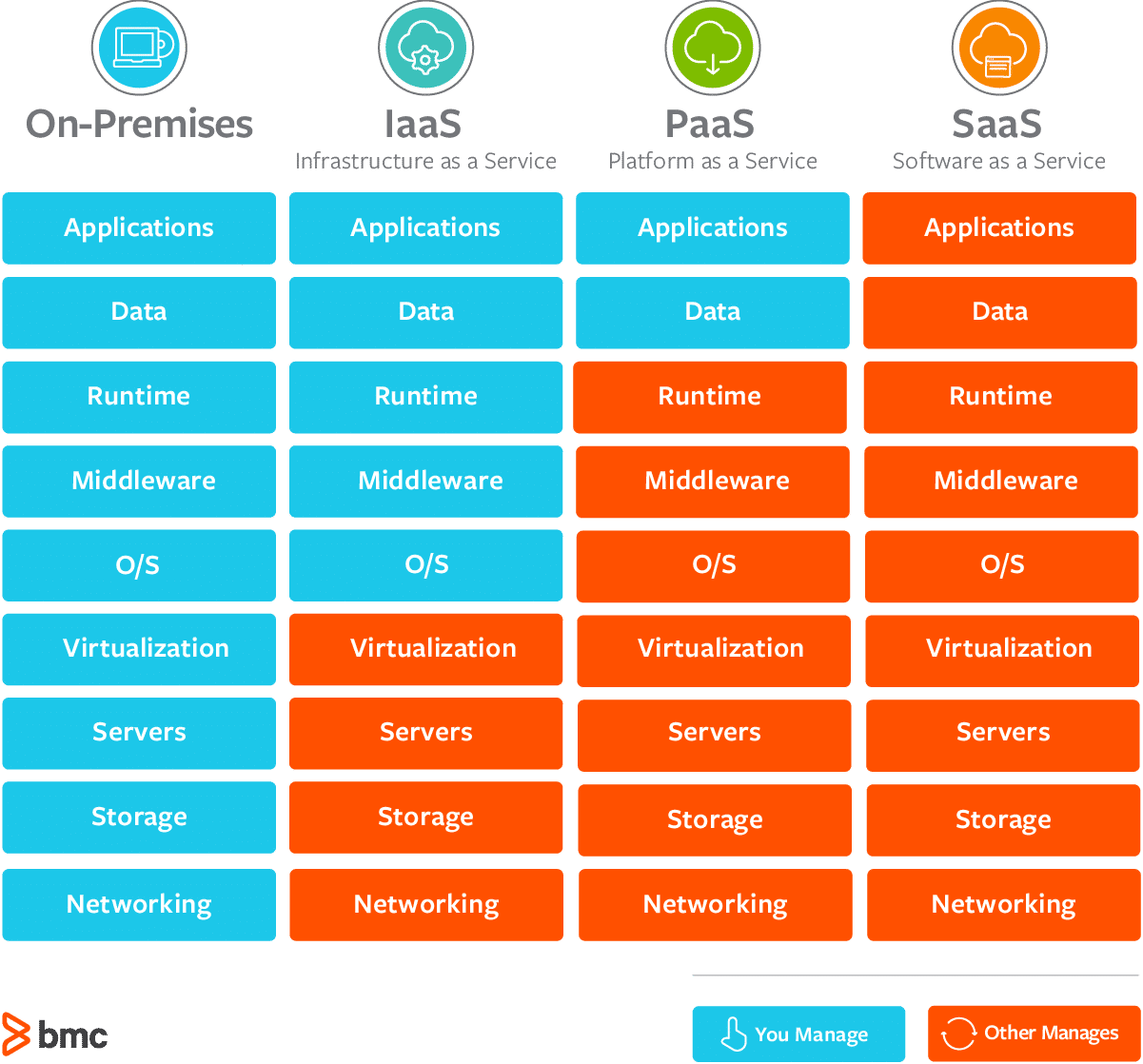Basics of Cloud Computing - rajeshkumarplv/aws-ccp-notes GitHub Wiki
What is Cloud Computing
Cloud Computing is the on demand delivery of compute power, DB storage, applications and other IT Resources.
Through a cloud service platform, you're going to get a pay-as-you-go pricing.
You can provision exactly the kind of resources you need and you can access them almost instantly.
Amazon Web Services owns and maintains the network-connected hardware required for these application services while you provision and use what you need via a web application.
Examples: Gmail is a Email Cloud Service. Dropbox is a cloud storage service built on AWS. Netflix is a video on demand service and built entirely on AWS.
Deployment models of Cloud:
-
Private Cloud
-
Public Cloud:
- AWS
- Azure
- Google Cloud
-
Hybrid Cloud
Five Characteristics of Cloud Computing
* On-demand self service.
* Broad network access.
* Multi Tenancy and Resource Pooling (multiple customers can share same infrastructure and applications with security and privacy)
* Rapid Elasticity and Scalability.
* Measured Service.
Six Advantages of Cloud Computing
* Trade Capital Expense **(CAPEX)** for Operational Expense **(OPEX)**.
* Pay on-demand: Do not own the hardware.
* Reduce Total Cost of Ownership **(TCO)** and Operational Expense **(OPEX)**.
* Benefit from massive economies of sale.
* Stop guessing capacity. Scale based on the actual measured usage.
* Increased Speed and Agility.
* Stop spending money running and maintaining data centers.
* Go Global in minutes by leveraging the AWS Global Infrastructure.
Problems solved by Cloud
* Flexibility: change resource types when needed.
* Cost-Effectiveness: pay as you go for what you use.
* Scalability: accommodate larger loads by making hardware stronger or adding additional nodes.
* Elasticity: ability to scale out and scale in when needed.
* High-availability and fault-tolerance: build across data centers.
* Agility: rapidly develop, test and launch software applications.
Types of Cloud Computing
- Infrastructure as a Service (IaaS)
- Provides Networking, Computers, Data Storage Space. Similar to On-Premises IT.
- Platform as a Service (PaaS)
- Removes the need for an Organization to manage the underlying infrastructure. Focus on deployment and management of Applications.
- Software as a Service (SaaS)
- Completed product that is run and managed by the Service Provider.

Types of Cloud Computing Examples
- Infrastructure as a Service (IaaS)
- Amazon EC2 on AWS.
- GCP, Azure, Digital Ocean
- Platform as a Service (PaaS)
- Elastic Beanstalk on AWS.
- Heroku, GCP, Azure.
- Software as a Service (SaaS)
- Many AWS Services.
- Gmail, Zoom, Dropbox
Pricing of Cloud
- Compute
- Storage
- Data Transfer OUT of Cloud. IN is free.
Regions and Availability Zones
The AWS Cloud infrastructure is built around AWS Regions and Availability Zones. An AWS Region is a physical location in the world where we have multiple Availability Zones. Availability Zones consist of one or more discrete data centers, each with redundant power, networking, and connectivity, housed in separate facilities. These Availability Zones offer you the ability to operate production applications and databases that are more highly available, fault tolerant, and scalable than would be possible from a single data center. The AWS Cloud operates in over 77 Availability Zones within over 24 geographic Regions around the world, with announced plans for more Availability Zones and Regions.
Each Amazon Region is designed to be completely isolated from the other Amazon Regions. This achieves the greatest possible fault tolerance and stability. Each Availability Zone is isolated, but the Availability Zones in a Region are connected through low-latency links. AWS provides you with the flexibility to place instances and store data within multiple geographic regions as well as across multiple Availability Zones within each AWS Region. Each Availability Zone is designed as an independent failure zone.